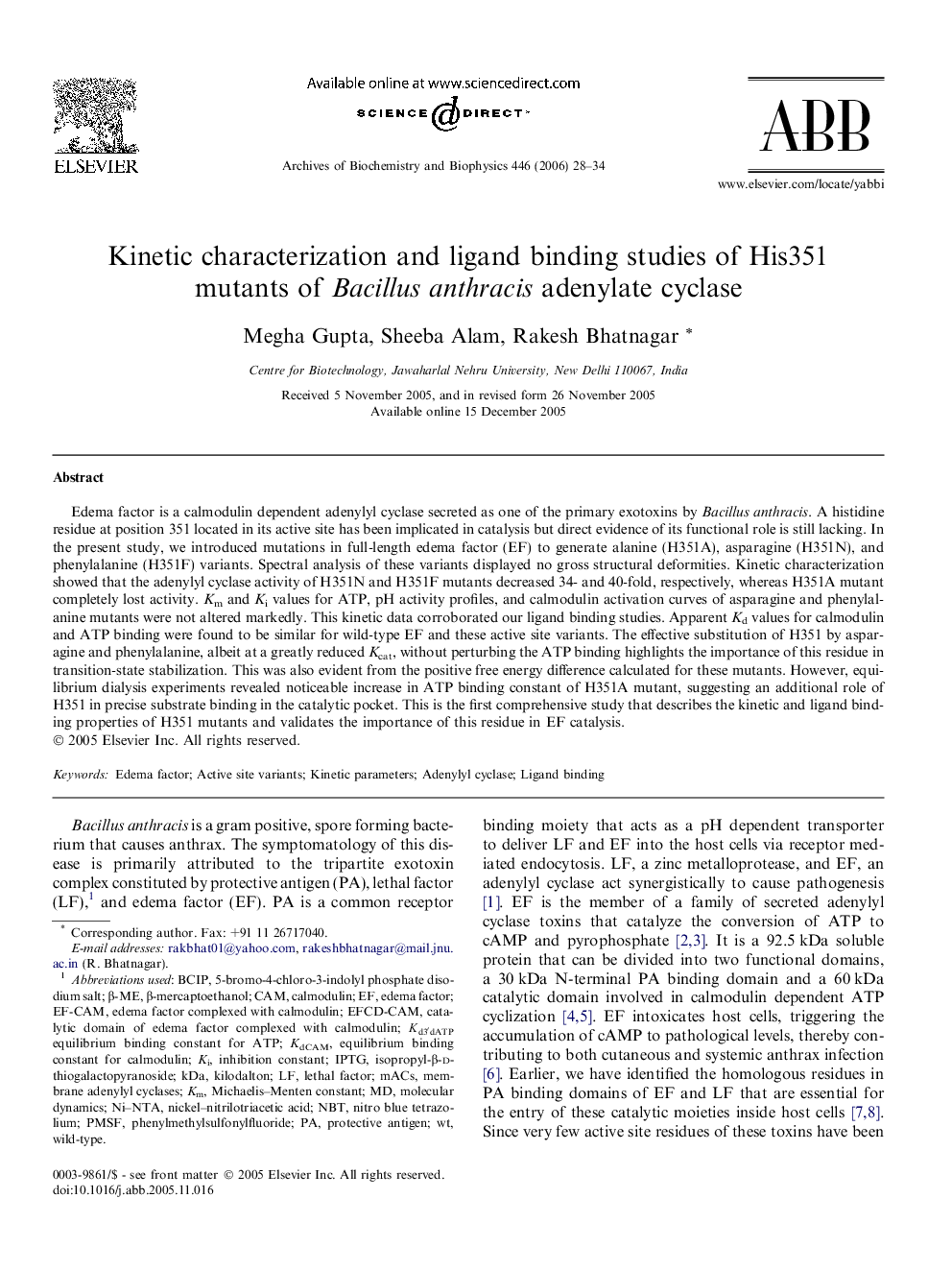| Article ID | Journal | Published Year | Pages | File Type |
|---|---|---|---|---|
| 1927625 | Archives of Biochemistry and Biophysics | 2006 | 7 Pages |
Edema factor is a calmodulin dependent adenylyl cyclase secreted as one of the primary exotoxins by Bacillus anthracis. A histidine residue at position 351 located in its active site has been implicated in catalysis but direct evidence of its functional role is still lacking. In the present study, we introduced mutations in full-length edema factor (EF) to generate alanine (H351A), asparagine (H351N), and phenylalanine (H351F) variants. Spectral analysis of these variants displayed no gross structural deformities. Kinetic characterization showed that the adenylyl cyclase activity of H351N and H351F mutants decreased 34- and 40-fold, respectively, whereas H351A mutant completely lost activity. Km and Ki values for ATP, pH activity profiles, and calmodulin activation curves of asparagine and phenylalanine mutants were not altered markedly. This kinetic data corroborated our ligand binding studies. Apparent Kd values for calmodulin and ATP binding were found to be similar for wild-type EF and these active site variants. The effective substitution of H351 by asparagine and phenylalanine, albeit at a greatly reduced Kcat, without perturbing the ATP binding highlights the importance of this residue in transition-state stabilization. This was also evident from the positive free energy difference calculated for these mutants. However, equilibrium dialysis experiments revealed noticeable increase in ATP binding constant of H351A mutant, suggesting an additional role of H351 in precise substrate binding in the catalytic pocket. This is the first comprehensive study that describes the kinetic and ligand binding properties of H351 mutants and validates the importance of this residue in EF catalysis.
